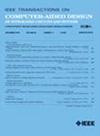OATT: Outlier-Oriented Alternative Testing and Post-Manufacture Tuning of Analog/Mixed-Signal Circuits
IF 2.9
3区 计算机科学
Q2 COMPUTER SCIENCE, HARDWARE & ARCHITECTURE
IEEE Transactions on Computer-Aided Design of Integrated Circuits and Systems
Pub Date : 2025-03-07
DOI:10.1109/TCAD.2025.3549353
引用次数: 0
Abstract
Modern analog mixed-signal (AMS) devices manufactured in advanced CMOS processes pose significant testing and post-manufacture tuning challenges. Measurement of the specifications of AMS components is generally difficult as this requires the use of a range of dedicated tests while defect-based testing on the other hand, requires extensive defect simulations that are compute-intensive. To overcome these limitations, this research proposes OATT; a testing and post-manufacture tuning approach for AMS circuits that is designed to stress the performance of the device under test (DUT), formalize a statistical (multidimensional Gaussian) distribution of the expected response of known “good” devices (inliers), and use test limits grounded in theoretical statistics to classify all out-of-distribution devices (outliers) as “bad.” It is an alternative test approach in that it does not explicitly target simulation of defect mechanisms. Tuning is performed to transform individual outlier DUT responses to those resembling inlier devices by modulating hardware tuning knobs, such as bias voltages and currents, using a reinforcement learning algorithm. Circuit simulations and hardware results demonstrate the viability and efficiency of the proposed approach.面向异常值的替代测试和模拟/混合信号电路的制造后调谐
采用先进CMOS工艺制造的现代模拟混合信号(AMS)器件对测试和制造后调谐提出了重大挑战。AMS组件规格的测量通常是困难的,因为这需要使用一系列专用测试,而另一方面,基于缺陷的测试需要大量的缺陷模拟,这是计算密集型的。为了克服这些限制,本研究提出了OATT;AMS电路的一种测试和制造后调谐方法,旨在强调被测器件(DUT)的性能,将已知“良好”器件(内线)的预期响应的统计(多维高斯)分布形式化,并使用基于理论统计学的测试极限将所有超出分布的器件(外线)分类为“坏”。这是一种可选的测试方法,因为它没有明确地针对缺陷机制的模拟。通过使用强化学习算法调制硬件调谐旋钮(如偏置电压和电流),执行调谐以将单个异常DUT响应转换为类似于初始设备的响应。电路仿真和硬件结果证明了该方法的可行性和有效性。
本文章由计算机程序翻译,如有差异,请以英文原文为准。
求助全文
约1分钟内获得全文
求助全文
来源期刊
CiteScore
5.60
自引率
13.80%
发文量
500
审稿时长
7 months
期刊介绍:
The purpose of this Transactions is to publish papers of interest to individuals in the area of computer-aided design of integrated circuits and systems composed of analog, digital, mixed-signal, optical, or microwave components. The aids include methods, models, algorithms, and man-machine interfaces for system-level, physical and logical design including: planning, synthesis, partitioning, modeling, simulation, layout, verification, testing, hardware-software co-design and documentation of integrated circuit and system designs of all complexities. Design tools and techniques for evaluating and designing integrated circuits and systems for metrics such as performance, power, reliability, testability, and security are a focus.

 求助内容:
求助内容: 应助结果提醒方式:
应助结果提醒方式:


